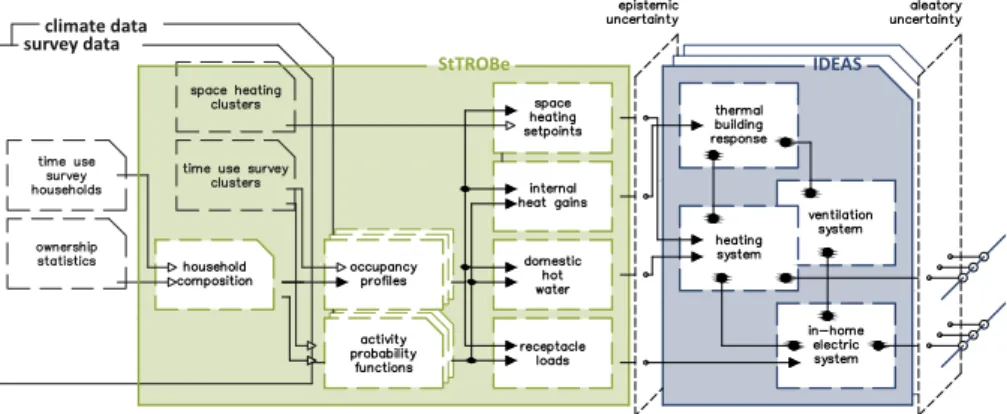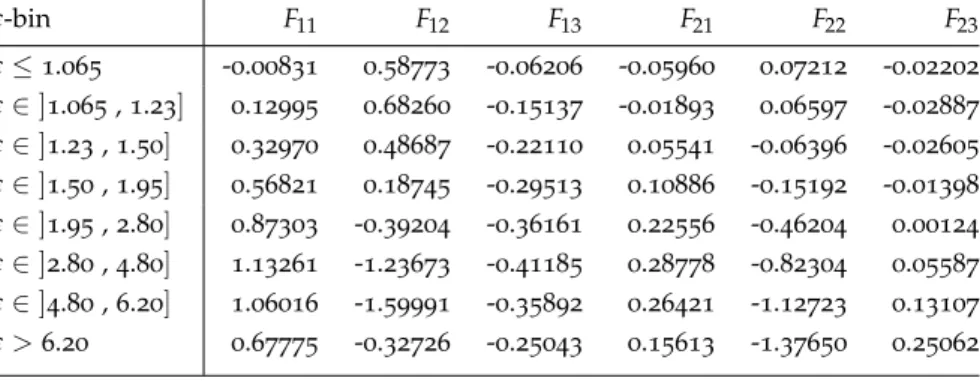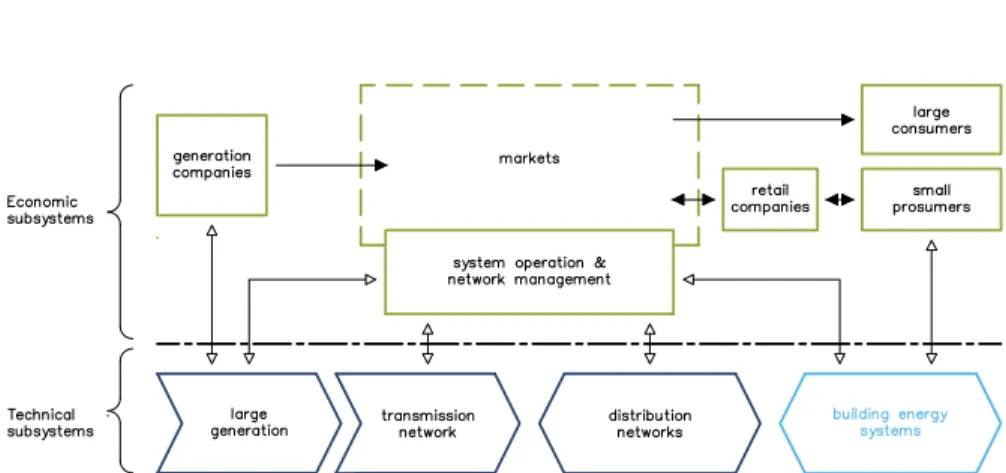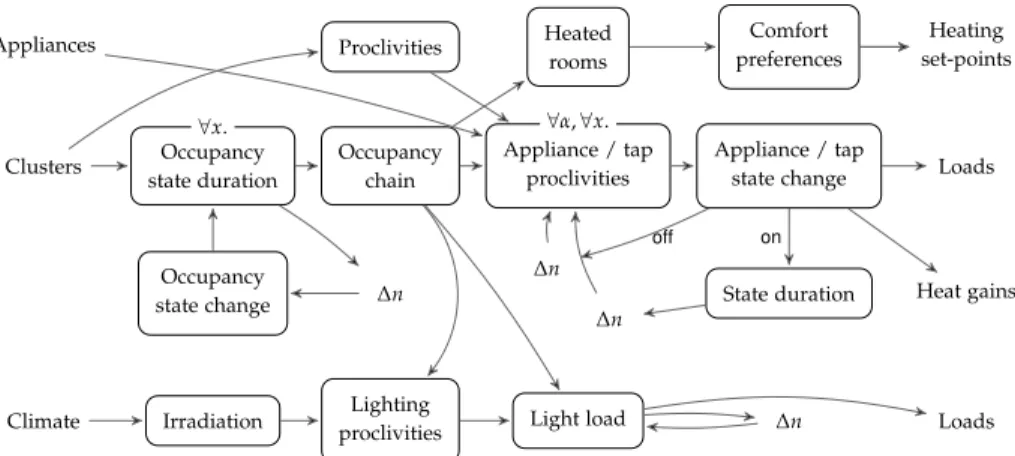Dissertation submitted as partial fulfillment of the requirements for the doctorate in Engineering 15 September 2015. The impact of heat pump-based homes on the low-voltage grid, on the other hand, is found to be negligible in an urban context when we consider their implementation in up to sixty percent of the homes.
Problem statement
This certainly applies when we consider an electrification of the building's energy services, e.g. through the implementation of a heat pump as an energy-efficient method of providing space heating and/or domestic hot water, and the installation of rooftop photovoltaic installations that have a possible impact on the distribution, transmission, billing and trading of electricity. To provide a first estimate of externalized effects of low-energy dwellings at the, in hierarchy, first total technical subsystem based on comprehensive building and energy system simulations.'.
Research scope and objectives
Excluding these effects underestimates the overall social costs of possible systems, leading to a disproportion between different possible policy measures. In addition to the overarching objectives, some methodological refinements are made in the area of building system and distribution system simulations.
Proposed methodology and outline
In conclusion, we propose an evaluation of the uncertainty in the above system simulations caused by the stochastic nature of human interventions as a boundary condition, and its impact on possible conclusions. To understand the complexity of the proposed research question, the work presented begins with a literature review of essential work; focusing on the main research methods generally addressed for the purpose of 'estimating the externalities of low-energy houses on the low-voltage distribution network'.
District energy system simulations
Control valves are based on the actuator signal that controls the capacity of the valve. The implementation of the physical equations in the Modelica IDEES library is evaluated in Section 3.2.4. Averaging the generated space heating setpointTsh[n]atτ10 is more complicated, as the profile must remain discrete given the parameter set ofh∝ϕ(h).
However, these values are biased due to the low operating hours of the heat pump. The color scale indicates the building insulation level of the dwelling in the neighborhood, i.e. the depicted {V1,V2,V3,V4,V5,V6}. First, the impact of the building design variables on the evaluation criteria related to the distribution system operator is evaluated, i.e. the characteristic voltage deviation and the present value income requirements.
First, the impact of the building design variables on the evaluation criteria related to the distribution system operator is evaluated, i.e. the characteristic voltage deviation and the present value of the revenue requirements. Therefore, a profile of the global horizontal solar radiation Ee(h)(t) and the total diffuse horizontal radiation E(h)d (t) is obtained from the global meteorological data, from which the direct solar radiation on the horizontal. surface E(h)D (t) is derived as E(h)e (t)−E(h)d (t).

Stochastic residential occupant behaviour modelling
Recapitulation
To quantify the uncertainty in the state variables caused by numerical approximations of the physical description.'. The observed average of the heating set point of the modeled space in the daytime zone is 18.3◦C. A summary of the costs10(x) associated with reconnecting a dwelling to the supplier is given in Table 5.2.
The color scale used indicates the level of insulation of the apartment building in the neighborhood, ie. {V1,V2,V3,V4,V5,V6} in table 5.5 on page 102. The sensitivity of the main evaluation criteria related to the operation of the distribution system on the proposed design variables varies greatly for rural and urban neighborhoods. In the following paragraphs, we aim to identify and evaluate the impact of building energy design variables on the stated evaluation criteria.
As mentioned in the earlier section, three phenomena occur as part of the current value income requirements PWRRrof the distribution grid operator. The simulation results of the considered national cases have been discussed in detail in the previous section.
Requirements for district energy system design
The IDEAS Library, a district energy system simulation library
An overview of the main physical properties for the resulting six cases is given in Table 3.1. In the next section, the simulation results of the considered rural cases are discussed in detail. The structure adopted is threefold: first, we focus on the influence of building design variables on the evaluation criteria related to the distribution system operator, i.e. the characteristic voltage deviation and the present value of revenue requirements.
The latter indicates that the Oi component of the current revenue requirements PWRRr can be estimated solely based on the building parameters and the degree of implementation. The simulation results of the considered urban cases have been discussed in detail in the previous section.

Spatial mapping for variance handling
Recapitulation
An overview of the costs I0(x) in connection with reconnecting a home to the parent is given in table 5.2. Second, the uptake of residential heat pump-based heating systems and solar systems is limited to the implementation in 60 percent of the homes in the current work.

A residential human behaviour model
Epistemic uncertainty estimation
Secondly, we weighed the economic evaluation criteria against each other, i.e. the present value of the distribution system operator's revenue requirements relative to the present value of the total cost of ownership. In the next section, the simulation results of the urban cases are discussed in comparison with the described results of the rural cases.

Behaviour-induced aleatory uncertainties
Recapitulation
Within this chapter, a full description of the stochastic boundary value problems specifying climatic conditions and residential human behavior is provided. The main effort consisted in the development of the Python StROBe package, which integrates stochastic resident population. In addition, the effect of the time resolution used for the occupants' behavior as a boundary condition on a set of possible objective functions is researched.
The survey of heat pump-based space heating systems corresponds to the general foreseen scenarios as elaborated in Section 3.3.3 based on the statements of the European Heat Pump Association, the European Association of Insulation Manufacturers and the Building Performance Institute Europe.
Evaluation criteria
When abstracting the TCOi that are not related to or influenced by the design options, the net present value of the specific cost of ownership remains the assessment criterion. 5.9) is the "present value of the specific revenue requirements" of design option x in M periods with ZI capital-related present value factor. A second critical component of I0(x) is the possible need to replace the power cable with a higher capacity power cable to meet the building requirements.
Five major evaluation criteria (and their physical components) are considered in this work: the present value of the total cost of ownership of the homeowner PWTCO(x)r , the present value of the income requirements of the distribution system operators PWRRr(x ), the characteristic daily voltage deviationUφ( x), the required backbone power capacity Pbb(x) and the resulting backbone electricity demand E(x)bb.

Design resources
The design of the building envelope has a direct impact on a set of variables that define the earlier mentioned evaluation criteria. On the other hand, the building envelope and related capacity define the (length of the) heating season and the resulting seasonality of the residential electrical load. The design of the heating system also has a direct impact on a set of variables that define the earlier mentioned evaluation criteria.
On the other hand, the heating system and the corresponding efficiency determine the seasonality resulting in the electrical load of the dwellings.

System constraints and simulation notes
The performance coefficient required for the transient heat pump model is based on the interpolation of a multidimensional performance map from manufacturer data. A central on/off room thermostat is implemented in the day zone for control of the space heating system whose signal depends on the difference between the room operating temperature Top,d(t) and the day zone room set point temperature Tsh,d( t) given by the user-occupant -model, including a hysteresis of 0.5◦C. The heat pump is controlled based on the on/off signal from the central room thermostat and set point values for the hot water storage tank if applicable.
All present value values are defined for a life of 30 years based on the expected life of buildings.
General results
Secondly, we weigh the economic evaluation criteria against each other, i.e. the current revenue requirements of the distribution system operator against the present value of the total cost of ownership. The current revenue requirements PWRRr for the rural simulations are within a wide range of EUR per heat pump-based building, as shown in figure 5.7 as a function of the installed heat pump capacity. The strong dependence on the characteristic voltage deviation Urmsφ and the current turnover requirements PWRRron the feeder power and the degree of implementation have two main disadvantages.
Figure 5.10 shows the present worth actual cost of PWTCOr+δPWRR as a function of the present worth cost of ownership of PWTCOr for a medium and a weak type of feeder and different performance levels. Same as Figure 5.7 on page 119 for the rural case, Figure 5.14 indicates the correlation between the current value of the revenue requirements of the distribution system operators PWRRr and the installed heat pump capacity Q0,hp for the urban case simulations. Figure 5.15 shows the present value of the actual cost of PWTCOr+δPWRRras as a function of the present value of the total cost of ownership of PWTCOr for all types of power supplies at the highest performance level.

Rural dwelling design externalities
Urban dwelling design externalities
Recapitulation
The first requirement for energy simulations is knowledge of global weather data, i.e. of climate variables that are independent of the surface. The long-wave radiative heat exchange of the outer surface with the cloudy sky is calculated based on the temperature of the sky dome. Two different methods are used to validate the implemented Building Energy Simulation (BES) model of the Modelica IDEAS library, i.e.
For a fair comparison of the IDEAS 0.3 simulations with the reference results in BESTEST, two changes have been made to the building energy implementation. For all cases of heavy mass 900 to 950, IDEAS 0.3 is at the bottom of the reference results of the tested programs. M(t) Mean anomaly of the position of the Earth relative to the Sun in Kepler's orbit, rad µg Gas viscosity, sPa.







